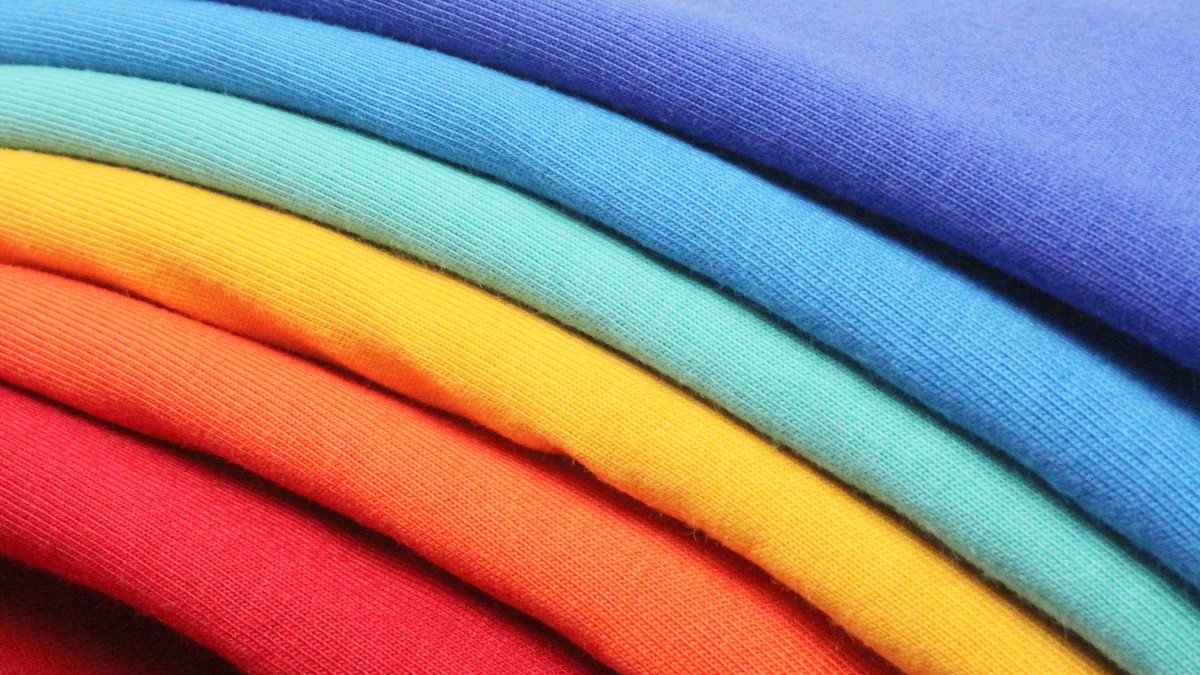Is Viscose More Sustainable Than Polyester?

Polyester is one of the worst yet most widespread fabrics used across the fashion industry. Finding the right alternative or substitute to polyester is difficult, with fabrics like cotton held back by their unsustainable practices and water consumption.
Viscose, also known as rayon, is a fabric touted as being one of the best alternatives to polyester.
Are viscose and polyester the same?
Viscose and polyester are both fabrics used for clothes and textiles.
Polyester is a synthetic fabric made from petroleum, while viscose is a semi-synthetic fabric made from wood pulp and chemicals like sodium hydroxide and carbon disulfide.
Polyester is used mostly for casual clothing, sportswear, and upholstery, while viscose is used as a silk alternative in blouses, dresses, and skirts.
The difference between them mostly comes down to how durable they are, their versatility, and ease of care.
What is viscose?
Viscose is a semi-synthetic fabric made from regenerated cellulose.
Also known as rayon, viscose is mostly used as an alternative to silk, though some forms of rayon can mimic wool, cotton, and linen.
Some people refer to viscose as an alternative name for rayon, while some people refer to rayon made using the viscose process as viscose. The viscose process produces artificial silk and Modal.
A cheap and durable alternative to silk, viscose is generally considered to be more sustainable than cotton or polyester.
By using wood pulp from trees (like eucalyptus, beech, and pine), as well as other plants (like bamboo, soy, and sugar cane), in a chemical solution, viscose can be spun into fibers and then threaded to create a fabric.
The most well-known brand names for viscose textiles include Modal, Tencel, Bemberg, Lyocell, and Ecovero.
Why is polyester not sustainable?
Polyester fabric is made from coal, petroleum, air, and water. It’s one of the most popular textiles and is used in everything from socks to upholstery.
Also known as PET or polyethylene terephthalate, polyester uses less water than natural fibers in its production, but the amount of energy needed is high.
Polyester factories also release “potentially dangerous substances like antimony, cobalt, manganese salts, sodium bromide and titanium dioxide” into nearby water sources.
Over 52% of fibers produced globally in 2020 were made of polyester.
Despite being durable, the use of polyester in fast fashion has contributed to a lot of plastic waste, with many polyester clothes sent to landfills.
Worse, approximately 70% of textile products are made from polyester fibers.
According to a 2022 review of microplastic emission from textile materials and its reduction techniques, polyester fibers are “considered a bigger threat to the environment than cotton because they are hydrophobic with an extremely low biodegradation rate”.
Cotton fibers release more fiber fabrics, but due to being petroleum-based polyester fiber fabrics remain in the environment much longer.
The same review recommends promoting “bio-based fibers from renewable resources” over petroleum-based synthetic fibers.
Fabrics made from cotton, viscose rayon, Lyocell, and polylactic acid are recommended, as they degrade in the environment faster than polyester.
Is viscose really better than polyester?
Viscose isn’t as sustainable as many claims, but it is better than traditional polyester.
The recyclability of viscose isn’t clear either, while polyester can be recycled at least once.
The chemicals used in the production of viscose – carbon disulfide and sodium hydroxide – are synthetic, so while viscose is bio-based, it’s still made with potentially toxic chemicals.
Carbon disulfide is the more worrying of the two, with health hazards for workers including heart disease and stroke.
Rayon factories are the primary source of carbon disulfide, along with the production of cellophane, carbon tetrachloride, carbon black, and sulfur recovery.
Carbon disulfide can pollute drinking water and waterways through the wastewater of rayon factories, contaminate vineyards treated with carbon disulfide, and can be found in the air around rayon factories.
Though Lyocell is also a rayon, it uses a different chemical as a solvent.
Limiting the potential health hazards of viscose can only be made around the factories they are produced in. Alternative chemicals should be investigated to create a more sustainable and less hazardous synthetic process.
Can viscose be sustainable?
Viscose overall is not as sustainable as people make it out to be – but it has potential. If production can be done with less environmentally damaging chemicals, like Lyocell, then viscose can be a sustainable fabric.
Producing sustainable viscose involves changing the production of viscose, by using more expensive methods that rely less on cheaper, synthetic chemicals, and proper wastewater disposal. This would increase the price of viscose, which is already expensive compared to polyester and isn’t an attractive prospect to companies that aren’t truly committed to being eco-friendly.
The wood pulp used for viscose is also often harvested unsustainably, with over 3.3 million tonnes of viscose pulp sourced from endangered ecosystems like Indonesian peatlands and boreal forests in Canada.
The MADE-BY environmental benchmark for fibers put viscose in classes D and E, with virgin polyester also in class D.
Common Objective’s fiber briefing of viscose identifies the main impacts of viscose as:
- Unsustainable raw material harvesting
- Chemical processing
- Processing pollution
- Deforestation
Viscose can become more sustainable if producers commit to:
- Sustainable harvesting, through Canopy’s CanopyStyle campaign
- Using closed-loop processes to avoid pollution
- Brand transparency on supply and pollution
- Reported “compliance with national emissions limits for air, water, and waste-management practices“
- Recycling viscose material wherever possible
- Sourcing alternative raw materials, like agricultural residues and microbial cellulose
The most sustainable viscose alternatives according to Common Objective are Lenzing’s EcoVero, Birla’s Eco Viscose, Renewcell’s Circulose, Evrnu’s NuCycl, Infinited Fiber’s Infinna, Eastman’s Naia, Enka, and Spinnova.
If you’re looking for other sustainable alternatives to polyester, you’d be better off looking at organic cotton and hemp fabrics.
